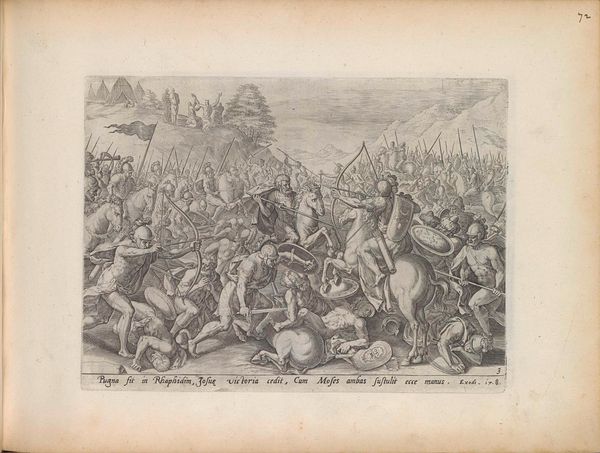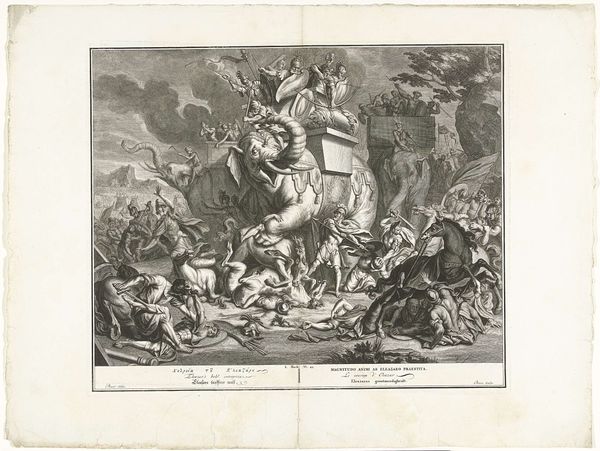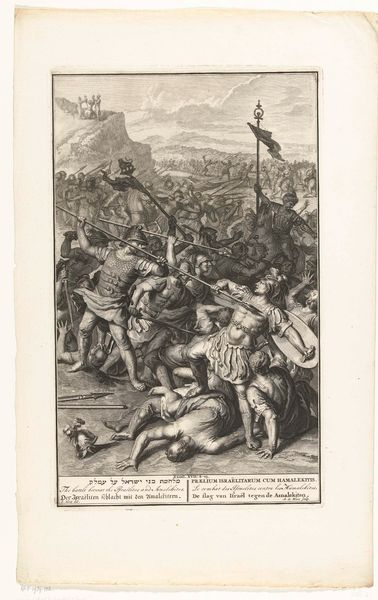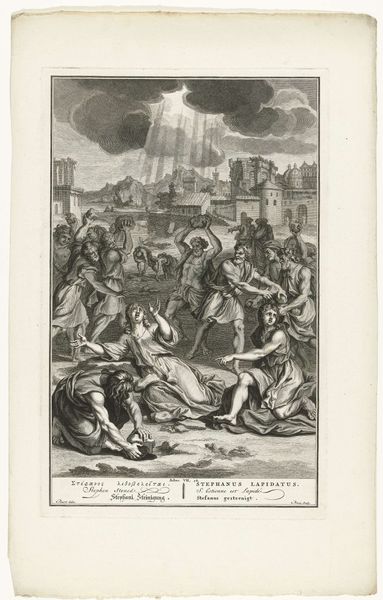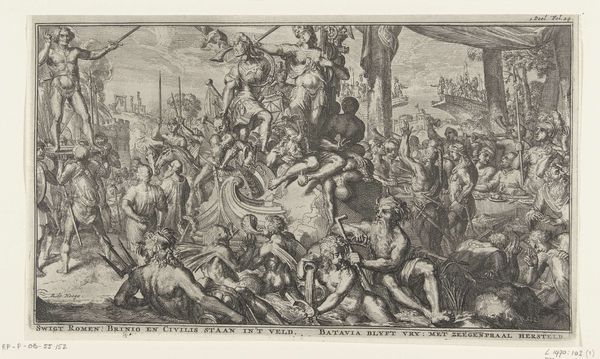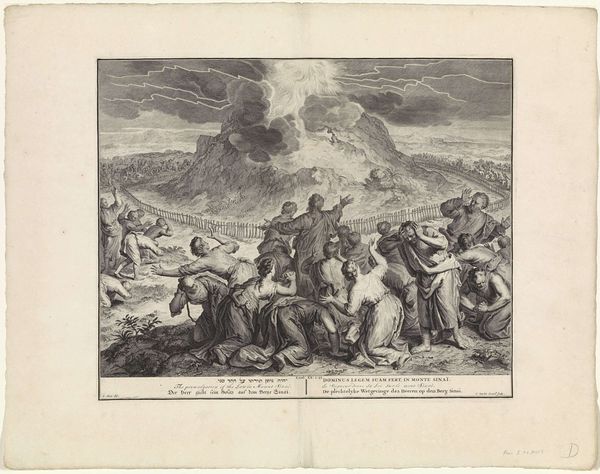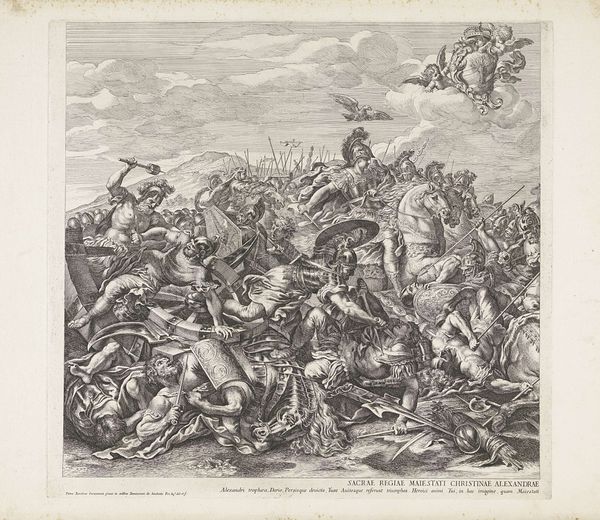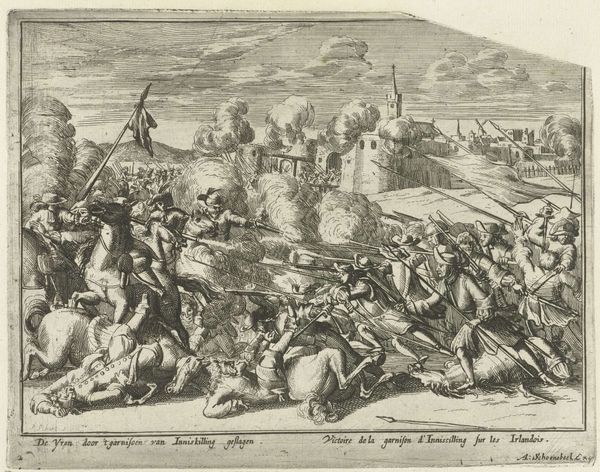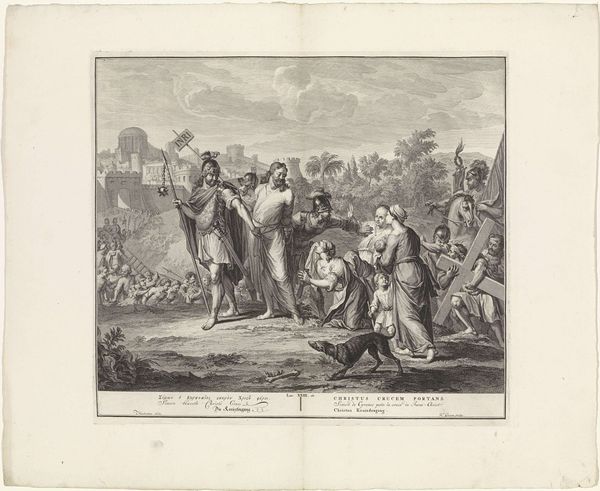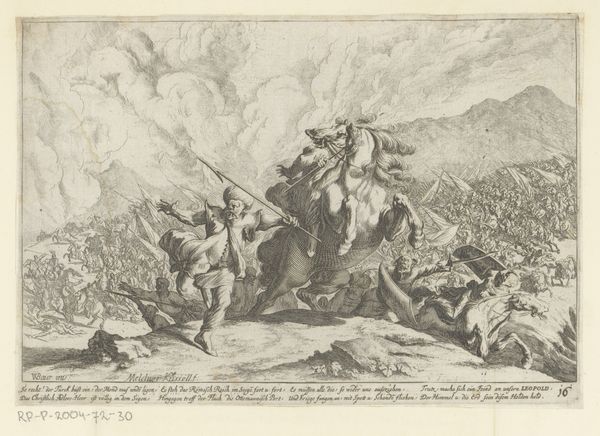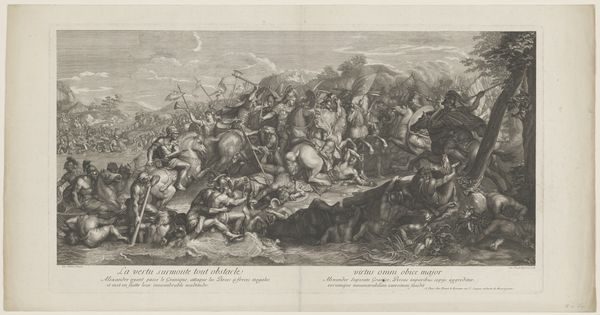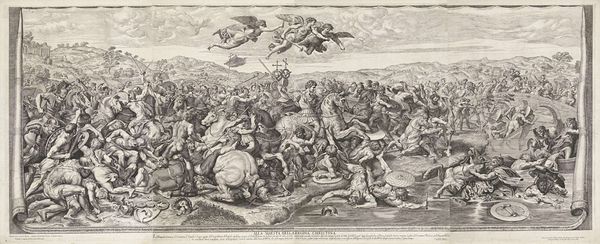
print, engraving
#
narrative-art
#
baroque
# print
#
pen sketch
#
old engraving style
#
figuration
#
line
#
history-painting
#
engraving
Dimensions: width 435 mm, height 355 mm
Copyright: Rijks Museum: Open Domain
Curator: Immediately striking, isn't it? A whirlwind of figures and a dramatic, almost theatrical use of light. Editor: It's unsettlingly busy, an overwhelming composition of dark hatching and detail. The engraving depicts the "Slag bij Gibeon," the Battle of Gibeon, dating from 1728, by Gilliam van der Gouwen, and currently residing here at the Rijksmuseum. Curator: Knowing that it’s from the Baroque period, you can definitely see that visual density mirrored in a lot of cultural production from that era – a fascination with grand narratives and a specific type of chaotic energy. Consider the politics of religious war at the time. What does it say that the engraver would choose this particular subject, depicting what some understand to be divinely sanctioned violence? Editor: Looking closely, you can see the skill involved in using line to create such depth and movement. Think of the tools, the physical labor that goes into translating such a complex scene into this medium. It's not just about aesthetic choices, but the demands of the engraving process itself, shaping the final result. The networks of labor involved – from the making of the plate to the production of ink and paper – contribute meaning, too. Curator: Absolutely, and to push that thought further, think about the gaze involved in creating, and then consuming, a piece like this. It feels inherently propagandistic. The engraving certainly seems to celebrate a dominant culture’s mythology around strength and chosen-ness, echoing in contemporary political rhetoric as well. Editor: Propaganda implies an easy, immediate consumption, but I see it more as a complicated dialogue of its time. The very act of production creates its own layer of interpretation, beyond the direct message. It uses the sun staying still as an important dramatic feature of the narrative. A material phenomenon worked into the storyline itself! It acknowledges a certain social understanding of how things happen, but, interestingly, bends that expectation in favor of narrative. Curator: That's a valid point. By looking closer at the artist's decisions we're both able to understand how it would resonate in its own time, and how it continues to speak to debates around power, belief, and cultural identity today. Editor: Indeed. Examining the tools and the artist’s technical labor alongside the engraving’s historical content, brings another level to our viewing.
Comments
No comments
Be the first to comment and join the conversation on the ultimate creative platform.
